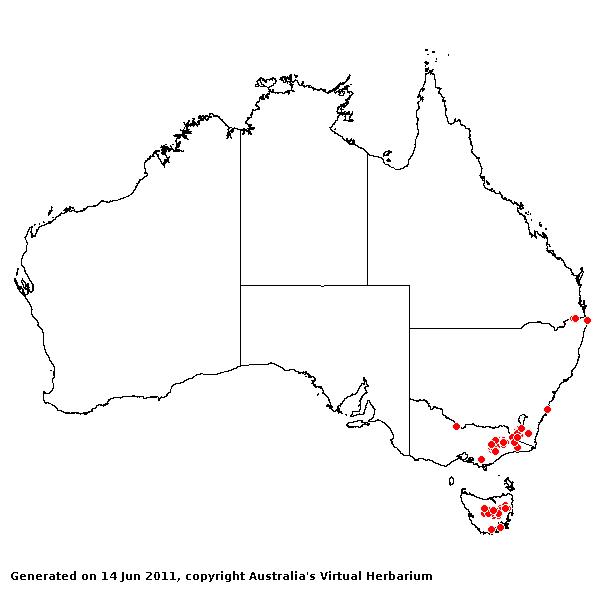Trisetum spicatum subsp. australiense
Hultén ex Veldkamp. Gard. Bull. Singapore 36(1): 135 (1983)
Classification.
(GPWG 2001) : Subfamily Pooideae. Tribe Poeae.
Type of Basionym or
Protologue Information: LT: Helms 847, 15 Apr 1922, Australia: New
South Wales: Mt. Kosciusko, 2135 m (S; ILT: C). LT designated by Veldkamp,
Gard. Bull. Sing. 36: 135 (1983).
Key references
(books and floras): [1878] G.Bentham, Flora Australiensis 7 (588 as Trisetum
subspicatum), [2002] D.Sharp & B.K.Simon, AusGrass, Grasses of
Australia (as T. spicatum), [2008] S.W.L.Jacobs, R.D.B.Walley &
D.J.B.Wheeler, Grasses of New South Wales (391 as T. spicatum),
[2009] A.Wilson (ed.). Flora of Australia, Vol 44A. Poaceae 2
(161).
Illustrations:
[1984] N.T.Burbidge. rev. S.W.L.Jacobs, Australian Grasses (267), [2008] S.W.L.Jacobs, R.D.B.Whalley
& D.J.B.Wheeler, Grasses of New South Wales, 4th edn (391), [2009].
A.Wilson (ed.), Flora of Australia 44A: Poaceae 2 (162, Fig.24).
Habit.
Perennial. Rhizomes present, elongated. Culms erect or geniculately ascending,
8–65 cm tall, 1–5 -noded. Leaf-sheaths glabrous on surface or hairy. Ligule an
eciliate membrane. Leaf-blades flat or involute, 4–15 cm long, 1–5 mm wide.
Leaf-blade surface glabrous or indumented.
Inflorescence.
Inflorescence solid, a panicle. Panicle linear or ovate, 1.5–11 cm long, 1–2 cm
wide.
Spikelets.
Spikelets pedicelled. Fertile spikelets many flowered, with at least 2 fertile
florets (2–3), comprising 2–3 fertile floret(s), with a barren rachilla
extension, oblong, laterally compressed, 4–7.7 mm long.
Glumes. Glumes
similar, thinner than fertile lemma, shiny. Lower glume elliptic, membranous,
keeled, 1-keeled, 1–3 -nerved. Upper glume elliptic or ovate, 4–6.5 mm long,
membranous, keeled, 1-keeled, 3 -nerved.
Florets.
Fertile lemma 4–6.6 mm long, keeled, 5 -nerved. Lemma surface glabrous or
indumented. Lemma apex entire or dentate, awned, 1 -awned. Median (principal)
awn dorsal, 2.5–6.5 mm long overall, with a twisted column. Anthers 3.
Continental
Distribution: Europe, Temperate Asia, Tropical Asia, Australasia, North
America, and South America.
Australian
Distribution: Queensland, New South Wales, Victoria, Tasmania.
Queensland:
Moreton. New South Wales: Southern Tablelands. Victoria:
Snowfields. Tasmania: Central Highlands, Ben Lomond, South West, Mt
Wellington.
Notes. Also N.Z. Alpine
and subalpine grasslands and woodlands, usually on skeletal soils. Flowers
Jan.-Mar.

